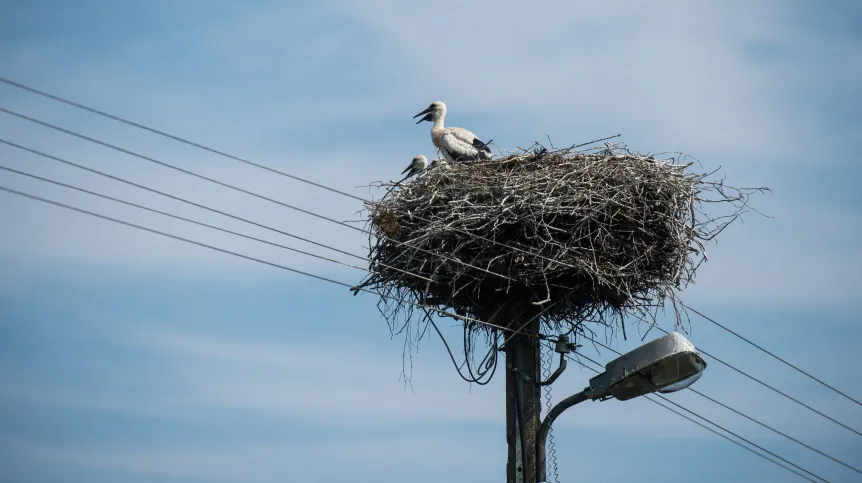
The white stork, one of the most charismatic bird species, is not only a symbol of Poland, but also an important indicator of the condition of the environment, say scientists from several centres who analysed the concentrations of pesticides and polychlorinated biphenyls in the blood of stork chicks.
This is important information - especially during the 8th international stork count taking place from July 1 to 15 - the authors of the study say in a press release.
'People often ask why we monitor this particular species. And here we go: we have another argument that the stork is a good indicator of the condition of the natural environment, including those elements that indicate excessive chemicalisation', says Professor Piotr Tryjanowski from the Poznań University of Life Sciences, corresponding author of the paper published in Environmental Science and Pollution Research.
The authors of this publication investigated how pesticides and polychlorinated biphenyls affected this species. They carried out research in western and southern Poland. This large-scale approach was possible thanks to the involvement of various institutions: the SILESIANA Ornithological Group, the Poznań University of Life Sciences, the University of Szczecin, the University of Zielona Góra and the Collegium Medicum of the Nicolaus Copernicus University in Bydgoszcz.
'Well-organized cooperation of people collecting material in the field, ringing birds, as well as laboratory teams and data analysts is required', say Joachim Siekiera from the SILESIANA Ornithological Group and Professor Leszek Jerzak from the University of Zielona Góra, coordinators of field teams working in the project.
'The white stork occupies a high position in the trophic pyramid of agricultural ecosystems, which makes it particularly sensitive to pesticides and their residues in the environment. Therefore, we analysed the blood of stork chicks for the presence of pesticides (beta-HCH, heptachlor, aldrin, endrin, 4.4′-DDD, 4.4′-DDE and 4.4′-DDT) and PCB, and we also examined blood morphology and biochemistry', says Professor Piotr Kamiński from the Collegium Medicum of the Nicolaus Copernicus University.
In the case of beta-HCH, the average value of pesticide concentrations in the blood of white stork chicks was 4.139 ± 19.205 ppb (the number of molecules of one substance per billion molecules of another - ed. PAP - Science in Poland), in the case of 4.4′-DDE it was 9.254 ± 91.491 ppb, and in the case of for PCBs it was 16,135 ± 44,777 ppb. Scientists also indicated negative relationships between beta-HCH and the activity of oxidative stress enzymes and between beta-HCH and leukocyte concentration.
'Interestingly, we also found a higher PCB concentration in the blood of male than female stork chicks', says Professor Łukasz Jankowiak from the University of Szczecin 'But we still do not have good explanations for these gender differences'.
'Our research confirms that the presence of pesticides in the environment can be a strong stress factor affecting the health of birds', says the publication co-author and veterinary doctor Martyna Frątczak. 'By consuming contaminated food (such as amphibians, earthworms, snails, fish, rodents), storks may be exposed to the chronic effects of pesticides through their accumulation in their bodies'.
Pesticides can negatively affect the reproductive, endocrine and nervous systems of birds, which may lead to serious declines in the population of white storks and other bird species associated with agricultural and water areas.
The researchers point out that the white stork has been confirmed as an important bioindicator and that the health status of chicks may reflect the level of pollution in ecosystems. Research including analyses of blood morphology and biochemistry can provide valuable information on the impact of pollutants on living organisms. Monitoring the white stork population and counting it can also provide important information about the quality of the environment - the authors of the study, great fans of this species, unanimously conclude.
PAP - Science in Poland
zan/ kap/
tr. RL













